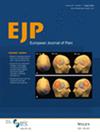Individualised Alpha-tACS for Modulating Pain Perception and Neural Oscillations: A Sham-Controlled Study in Healthy Participants
Abstract
Background
Neural oscillations are increasingly recognised as key mechanisms integrating the sensory, affective and cognitive dimensions of pain, yet their precise role in pain modulation remains poorly understood. Transcranial alternating current stimulation (tACS) offers a promising tool for modulating these oscillations and elucidating their function in pain processing. However, findings on tACS-induced pain modulation have been inconsistent, possibly due to a lack of individualised protocols.
Methods
In this study, we investigated the effects of tACS delivered at the individual peak alpha frequency (IAF) on both pain perception and neural oscillations. Using a within-subject, sham-controlled design, we applied tACS over the primary motor cortex (M1) contralateral to the dominant arm in 38 healthy participants. Sustained periodic 0.2 Hz thermonociceptive stimuli were applied to the dominant forearm before and after tACS. Pain perception and heat pain thresholds (HPT) were assessed before and after tACS. To calculate IAF from recorded scalp electroencephalography, we used a discriminative approach based on independent component analysis, enabling the isolation of somatosensory IAF (SS-IAF).
Results
The results revealed an overall increase in pain perception and a decrease in HPT in both sham and active conditions, with no significant interactions between conditions. However, a trend toward reduced sensitisation to thermonociceptive stimuli post-tACS was observed. Exploratory analyses suggested a sex-specific effect of tACS, with a potential modulation of HPT observed in women but not in men. Furthermore, we observed a significant correlation between SS-IAF and HPT.
Conclusions
These findings provide novel perspectives on advancing individualised neuromodulation approaches for pain.
Significance
This article introduces an individualised transcranial alternating current stimulation (tACS) approach, targeting the sensorimotor area at the individual somatosensory alpha frequency. Our findings highlight its potential for modulating pain perception and provide novel perspectives on advancing individualised neuromodulation for pain management.

 求助内容:
求助内容: 应助结果提醒方式:
应助结果提醒方式:


